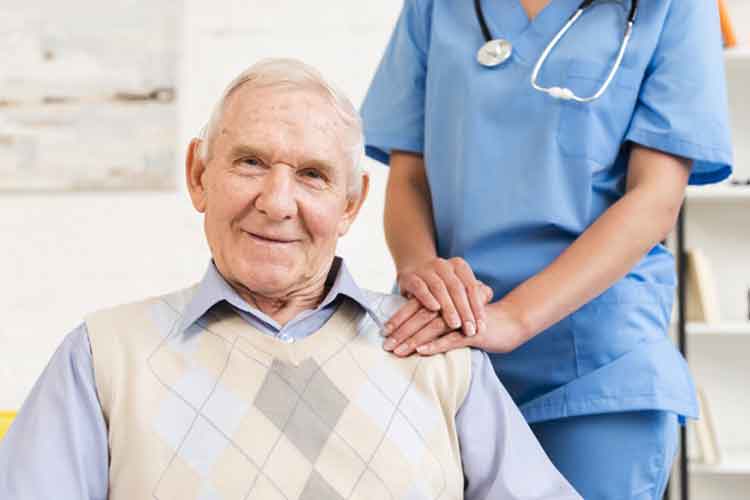With the current medical treatment for uncomplicated breaks of the lower leg bones (tibia and/or fibula), you will be at home for several days with your leg in a temporary splint. After the bones are set you will be sent home in a better splint or cast, with more visits to your doctor in the future. DIY home health care isn’t going to be easy, but these tips can make the next 2 or 3 months less frustrating for you and your caregivers. Caution: If any of my suggestions conflicts with what your doctor told you to do, follow the doc’s advice. Your doctor has seen your x-rays. I haven’t.
If everything goes well, there’s nothing to do for weeks but sit around and heal. You will be bored out of your skull. Here’s your chance for reading that stack of books or finishinishng the quilt you started three years ago. Send a minion to get books and DVDs from the local library. Surf the Internet … you will have hours for newsgroups and forums. Subscribe to Netflix. I hate to mention work, but telecommute to work if you can, and participate in conference calls.
GET HELP: Parents, significant others, roommates, children or friends can be recruited to help you through this. You will need their help the first month, and a chauffeur for a couple of months longer. This isn’t a license to be a slacker, but don’t go all heroic and try to handle anything that is temporarily impossible.

PAIN CONTROL TIPS: A cast or splint forces your leg into awkward positions, stretching muscles and ligaments. Even if you are a no-drugs type, pain relievers and a muscle relaxant at bedtime may be needed to help you sleep. If this is your first major injury and first experience with Class 3 prescription drugs, you may be surprised to discover that even prescription pain killers do not make you 100% pain free. They will make you more comfortable.
You may also be surprised that your broken leg doesn’t cause excruciating pain. Fractures should be tolerable as soon as the leg is properly splinted and the break immobilized. That throbbing feeling is from swelling and tissue damage. Elevate your leg, getting it above your torso, and you will feel better. Hot grain bags on tense muscles, massage and TLC can all help.
Caution: Do not take any OTC medications of any kind without checking for possible inter-reactions with your pain relievers and muscle relaxers. That all-natural, herbal soothing tea your friend recommends may have enough kava in it to kill you when it’s combined with a prescription drug.
TRANSPORTATION TIPS: Your helpers will be hauling you to doctor’s appointments early in the adventure.
Get temporary handicapped tags: Your state’s Motor Vehicle Department website has forms for getting a temporary tag so your driver can use handicapped parking. The forms require a doctor’s signature. Download the forms and have them ready for your doctor to sign before your first post-accident visit and you can apply for the tags immediately afterwards, click this over here now.
Riding in a sedan or SUV: The best spot for you is the rear seat, with your splinted leg resting on the seat. Pad the angle between the door and seat to improve your comfort, and remember to wear the seatbelt.
Getting into the car: Stand in the open door (on the passenger’s side if the cast is on your right leg, on the driver’s side if the cast is on your left leg) with your back to the seat. Sit down on the seat, then use your arms and uninjured leg to push yourself across the seat until your back is against the door on the far side of the vehicle. You will drag the injured leg on the seat. Your helper then puts your crutches on the floor.
It might be easier if your helper holds your injured leg up so it clears the seat instead of dragging. They should not use the leg to push you into the seat. You pull the leg in while they do nothing but keep it elevated.
Getting out of the car: Your helper removes the crutches and leans them against the car. Then, while your helper lifts the injured leg off the seat, you use your arms and uninjured leg to shove yourself towards the door, where your crutches or wheelchair are waiting. Do not try to open the door you are leaning against and exit that way. It’s not going to work. You will go headfirst onto the asphalt.
PREPARING YOUR HOME: Decide which rooms to use. Having at least two areas for lying down helps your morale, and if one of them has a nice view, it’s even better. You need sturdy furniture and a way to elevate the broken leg in every spot.
Make sure you have a clear path between the lounging or sleeping area, the kitchen, and one bathroom. Remove all area rugs and other obstacles such as ottomans, decor, and fragile furniture.
MOBILITY ASSISTANCE DEVICES: Don’t spend a fortune on these things. Borrow from family, co-workers or friends. Check freecycle.com, Craig’s list, local want ads, and local thrift stores before you pay full price or sign an expensive rental contract. After you are walking again, return the equipment or recycle it to others.
Crutches: Unless you have amazing arm strength and balance, crutches aren’t the best solution.
Walker: A walker has several advantages over crutches, such as not falling onto the floor as soon as you release your grip. It is easier to use a walker as support while you change from sitting to standing. You can attach a basket or fanny pack to the front of a walker to carry things, and it shoves pets and small children out of your path.
Wheeled chair: I did not say “wheelchair”. Rolling around on an office-style chair is possible. It’s easiest if you roll backwards, pushing with the unbroken leg.
Toilet hand grips: Using a toilet without falling when you stand up is difficult. If your house doesn’t have permanent grab bars, buy temporary hand grips that fit over the toilet bowl. The sturdiest ones are supported by a frame, like a child’s potty chair on legs. Remove the toilet’s seat, and place the frame over the toilet bowl.
Cane: When your physician tells you to start learning to walk again, a cane is easier than a crutch.
TIP: After you have begun putting some weight on the healing leg (typically 6-8 weeks post surgery) the cane (or crutch) should be opposite the injured leg. The cane and the broken leg move simultaneously, each supporting part of your weight as you move the unbroken leg forward.
BATHING TIPS:
As soon as you can hobble to a bath tub, you will have two challenges. First is bathing without falling down, and a bath stool solves that problem. Put the stool in the tub or shower stall, sit on a chair outside the tub and hoist yourself onto the bath stool. Use a hand-held shower wand for wetting and rinsing.
If you have a cast, even a fiberglass cast, it has to be kept dry. If the padding under the cast gets wet, you can get nasty skin infections. A home-made protector of towels, trash bags and duct tape works well. Tape a folded towel just above the top of your cast to absorb the inevitable leaks, then pull a large plastic trash bag over your leg. Wrap a strip of duct tape snugly over the trash bag above the protective towel, pleating the bag neatly to fit. Then fold the bag down over the duct tape and wrap a strip of medical tape over the junction of plastic and skin. Even with the protector, be careful to avoid a direct stream onto the top of the trashbag.
If that’s too much hassle, Shower-Dri sells inexpensive cast protectors. My sister says they are great – she spent 3 months in a full-leg cast for a broken ankle.
If you had surgical repairs – rods and screws – you will probably be in a soft, removable splint. As soon as the stitches are out, you can shower. Remove the splint, hoist yourself onto the bath stool and bathe. No problems.
DIET AND DIGESTION ISSUES: The combination of sudden inactivity and opiate pain killers is not good for your bowels. You will be constipated. Send a helper to the drugstore for a huge bottle of soluble fiber laxative and take a daily dose or two.
Don’t turn to food to relieve boredom. Lying on the couch, watching the sports channel and eating chips is a sure way to turn into a blimp. Eat nourishing low-calorie meals to minimize the inevitable weight gain.











 Five unique sports to watch in the 2012 Summer Olympics
Five unique sports to watch in the 2012 Summer Olympics